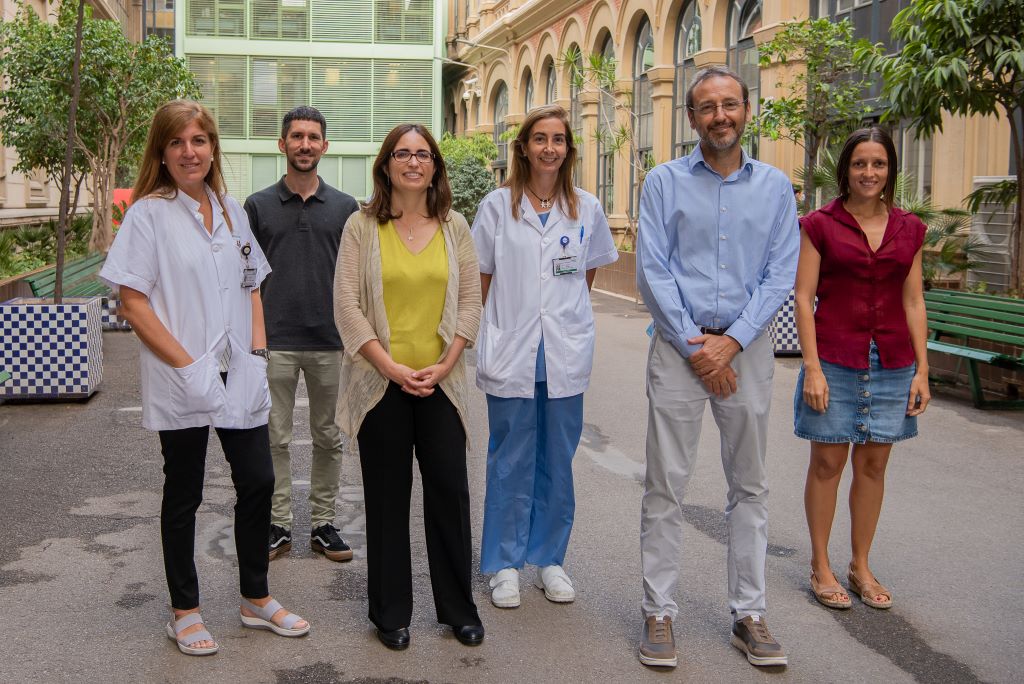Being born with a low weight can cause changes in the heart that persist into adulthood

People who have been born underweight, that is, babies in the first decile (corresponding to 10% of babies born with the lowest weight), have more cardiovascular problems when they are adults. This means that these people are up to three times more likely to suffer from a myocardial infarction. They are also at a higher risk for high blood pressure, stroke, diabetes, and metabolic syndrome.

People who have been born underweight, that is, babies in the first decile (corresponding to 10% of babies born with the lowest weight), have more cardiovascular problems when they are adults. This means that these people are up to three times more likely to suffer from a myocardial infarction. They are also at a higher risk for high blood pressure, stroke, diabetes, and metabolic syndrome.
A study coordinated by a team from BCNatal (Hospital Clínic, Hospital Sant Joan de Déu and the University of Barcelona) and IDIBAPS, with support from La Caixa Foundation, shows that those people who were born underweight show differences in the structure and function of the heart and have less abilities to do exercise compared to the other population during adulthood. The paper has been published in the journal JAMA Cardiology.
The research team, led by Eduard Gratacós, professor at the University of Barcelona, director of BCNatal and head of the Foetal and Perinatal Medicine Research Group (IDIBAPS), was the first to show in previous studies that an important part of the problem these babies have lies in the heart. “We observed that the heart of those babies born with a low weight show differences in the function and structure, and these differences that come up in the foetal life remain until adolescence”.
Something left to find was whether the changes in structure and function of the heart remain in adulthood, and this has been studied in the paper published in JAMA Cardiology. “It is a pioneering study, which combines sophisticated computer-assisted analytical techniques to study the shape of the heart with MRI with an effort test”, notes Marta Sitges, director of the Cardiovascular Clinical Institute, head of the Cardiac Imaging Research (IDIBAPS) and co-author of the study.
The study was carried out with people aged from twenty to forty, who had been born with low weight and a regular weight. To find them, they checked the books in the delivery rooms in Hospital Sant Joan de Déu from twenty and forty years ago. With the date of birth and the motherʼs surname, they could get in touch with some of these people. The study counted on 158 participants: 81 of these had been born underweight and 77 with a regular weight. They had an MRI done and a bike exercise test.
Differences in the structure and response to effort
“The heart resonance showed that those who had been born underweight kept changes in the structure of the heart in adulthood. Their right ventricle had a different shape”, notes Fàtima Crispi, senior specialist doctor at BCNatal, scientific coordinator at IDIBAPS Foetal and Perinatal Medicine Research Group and lecturer at the UB.
Researchers also found that these people have a lesser ability to do exercise, that is, they are not able to generate as much strength with the bike as others, and they get tired sooner. “This does not mean they cannot do exercise, quite the contrary”, says Crispi. “They may not have the same ability as the other people and they get tired before the others”. Researchers also observed that changes in the heart are more marked in people who smoke, overweight or sedentary people.
Gratacós believes this study shows the importance of foetal medicine in the prevention of pathologies in adulthood. “If we identify problems of foetal growth during the pregnancy and we promote healthy habits since childhood, we will avoid consequences that foetal problems can bring to adulthood”, he concludes.
A recent study by the same research group demonstrated that having been born with a low weight triples the risk of having severe COVID-19.
Article reference:
F. Crispi, M. Rodríguez-López, G. Bernardino et al. “Exercise Capacity in Young Adults Born Small for Gestational Age”. JAMA Cardiology. July 21, 2021. doi:10.1001/jamacardio.2021.2537
The study counts on the participation of, among others, professionals from the Cardiovascular Clinical Institute, the Respiratory Clinical Institute, the IDIBAPS research groups on Cardiac Imaging and Translational Computing in Cardiology and researchers of the University of Barcelona, Pompeu Fabra Unievrsity, the Barcelona Supercomputing Centre and Philips Research France. The project counts on the support from La Caixa Foundation, Carlos III Health Institute, the European Commission, CEREBRA, CIBERER and AGAUR.
